从零实现一个高性能 HTTP 服务器:深入理解 Tokio 异步运行时与 Pin 机制
Rust异步HTTP服务器实现与原理分析 本文从零构建了一个基于Tokio的异步HTTP/1.1服务器,深入探讨了Rust异步编程的核心机制。主要内容包括: 基础实现:使用Tokio的TcpListener构建服务器骨架,支持并发连接处理 HTTP协议:实现简易HTTP/1.1响应,遵循RFC规范 异步原理:解析async/await如何被编译为状态机 内存安全:深入分析Pin机制解决自引用结构体
目录
- 引言:为什么从零写 HTTP 服务器?
- 第一步:构建异步 TCP 服务器骨架
- 第二步:实现简易 HTTP/1.1 响应
- 第三步:理解 async/await 背后的 Future 状态机
- 第四步:为什么需要 Pin?——自引用与内存安全
- 第五步:Tokio 如何使用 Pin 保障任务安全
- 性能实测
- 总结
- 参考文献
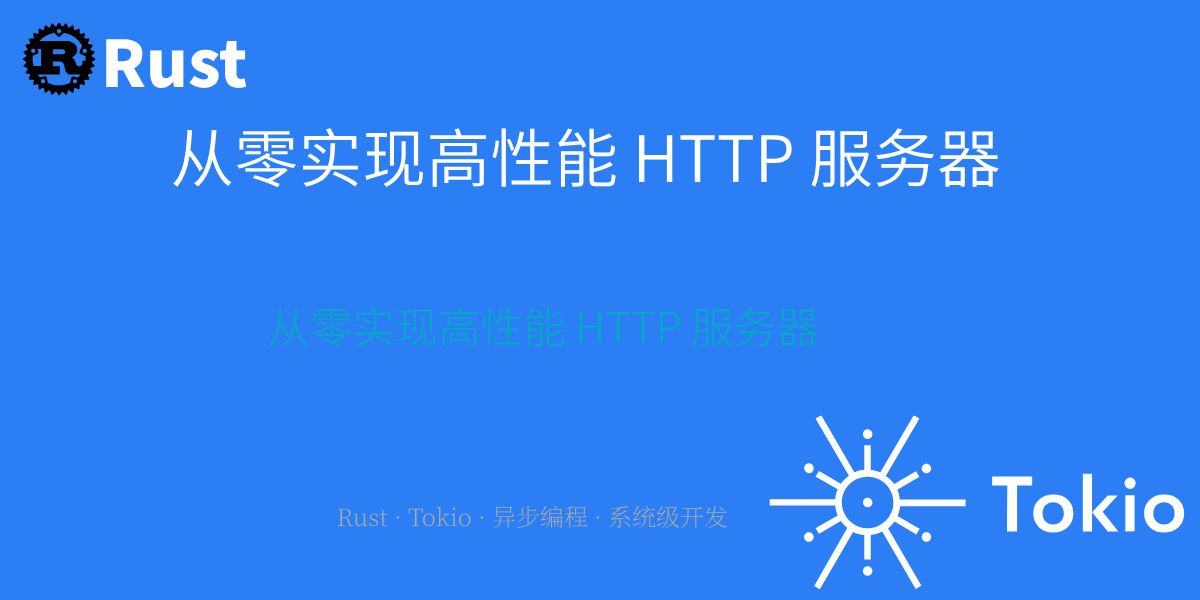
1. 引言:为什么从零写 HTTP 服务器?
Rust 的异步生态以 Tokio 为核心,支撑着 Actix-web、Axum、Tide 等高性能 Web 框架。然而,许多开发者仅停留在“调用 API”层面,对底层机制如 Future、Waker、Pin 等缺乏深入理解。
本文将从零开始,不依赖任何 HTTP 框架,仅使用 tokio::net 和标准库,逐步构建一个支持并发的 HTTP/1.1 服务器。在此过程中,我们将:
- 揭示
async/await如何被编译为状态机; - 分析为何
Pin是异步编程中不可或缺的安全保障; - 验证 Tokio 任务调度器如何安全地管理 Future 生命周期。
💡 目标读者:具备 Rust 基础语法、了解所有权概念,希望深入异步运行时机制的开发者。
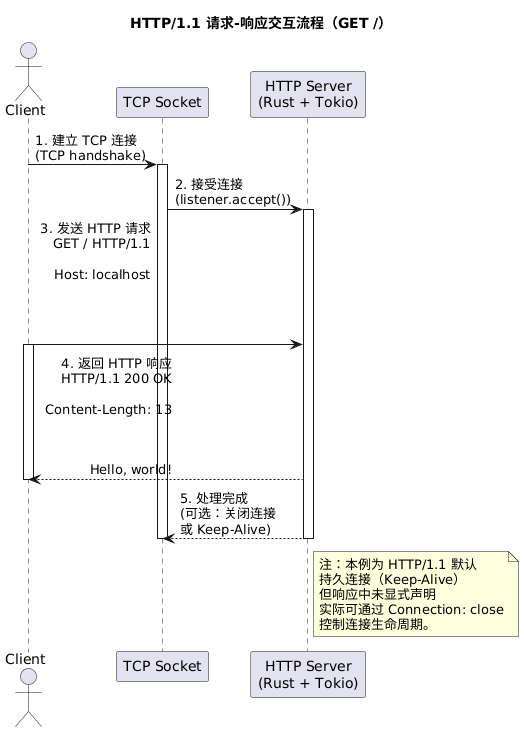
2. 第一步:构建异步 TCP 服务器骨架
我们从最基础的 TCP 监听开始。使用 tokio::net::TcpListener 实现并发连接处理:
use tokio::net::TcpListener;
use std::error::Error;
#[tokio::main]
async fn main() -> Result<(), Box<dyn Error>> {
let listener = TcpListener::bind("127.0.0.1:8080").await?;
println!("Server listening on http://127.0.0.1:8080");
loop {
let (stream, _) = listener.accept().await?;
tokio::spawn(async move {
handle_connection(stream).await;
});
}
}
tokio::spawn将每个连接处理逻辑放入独立任务(task),实现并发。- 每个任务拥有独立栈(堆上分配),互不阻塞。
✅ 验证点:此代码可直接运行,访问 http://127.0.0.1:8080 将触发 handle_connection。
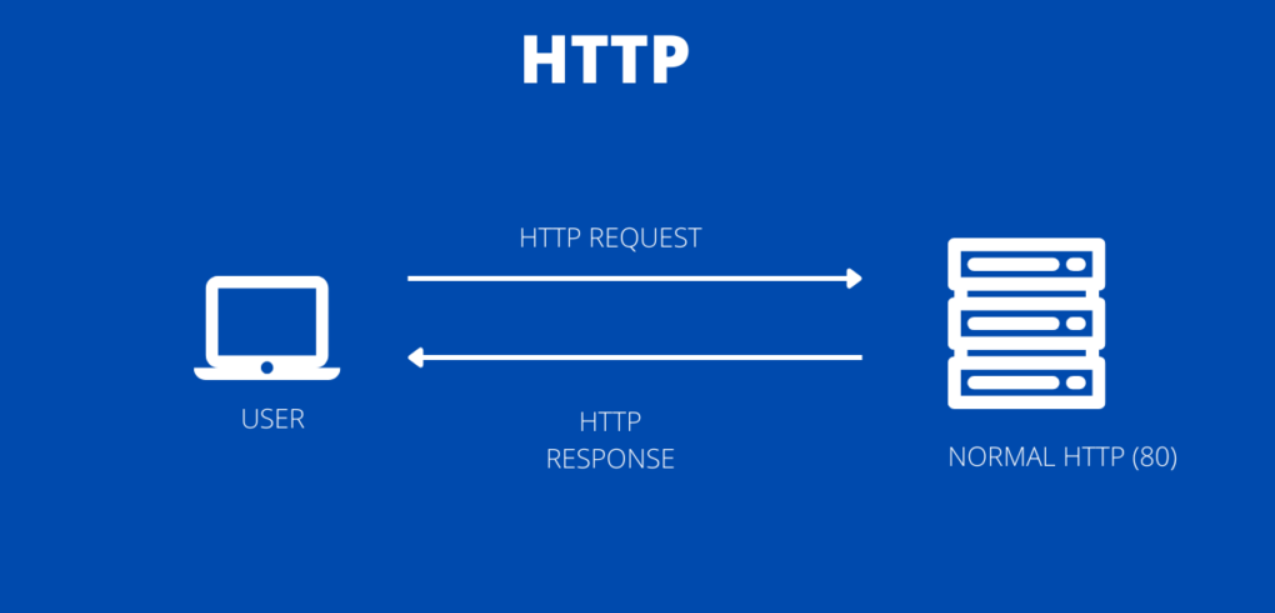
3. 第二步:实现简易 HTTP/1.1 响应
我们实现一个最小化的 HTTP/1.1 响应器,仅处理 GET / 请求:
use tokio::net::TcpStream;
use tokio::io::{AsyncReadExt, AsyncWriteExt};
async fn handle_connection(mut stream: TcpStream) {
let mut buffer = [0; 1024];
if let Ok(n) = stream.read(&mut buffer).await {
// 简易请求解析(仅检查是否包含 "GET /")
let request = String::from_utf8_lossy(&buffer[..n]);
if request.starts_with("GET /") {
let response = "HTTP/1.1 200 OK\r\nContent-Length: 13\r\n\r\nHello, world!";
let _ = stream.write_all(response.as_bytes()).await;
}
}
// 忽略错误,连接关闭
}
- 响应严格遵循 RFC 7230:状态行 + 头部 + 空行 + body。
Content-Length确保客户端能正确读取响应体。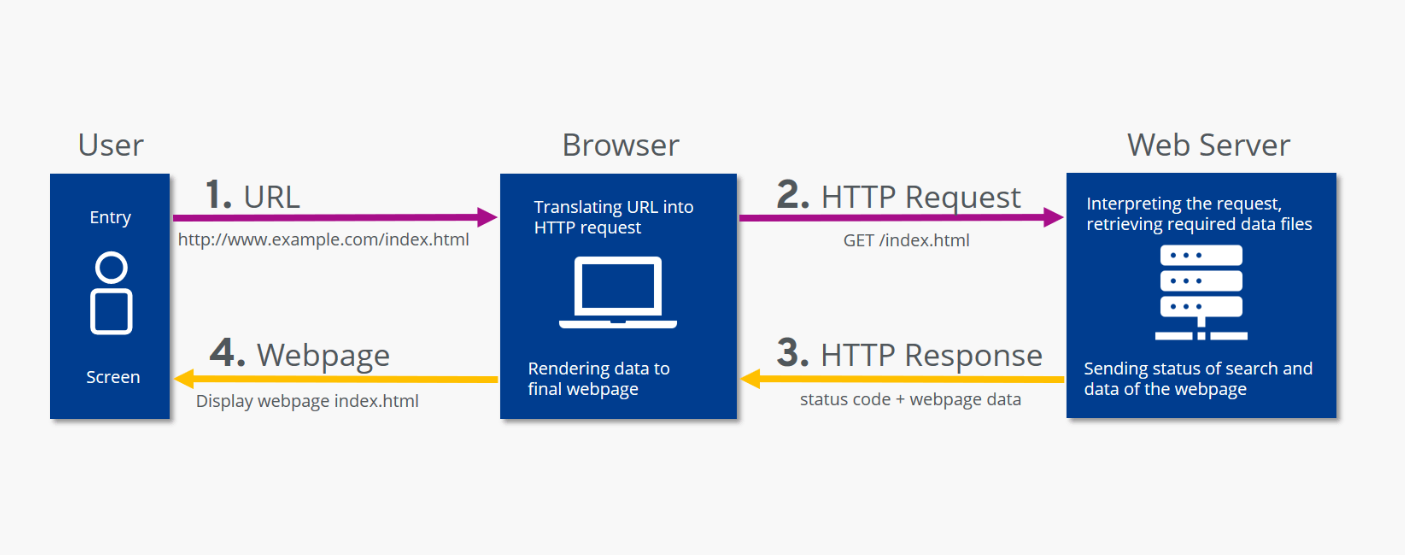
📌 注意:此实现不支持 Keep-Alive、POST、路径路由等,但足以验证异步 I/O 模型。
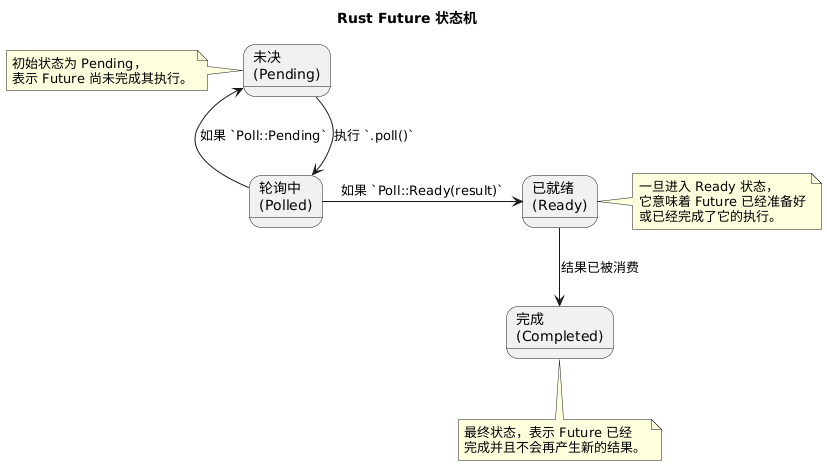
4. 第三步:理解 async/await 背后的 Future 状态机
async fn 并非魔法,它被编译器转换为一个实现了 std::future::Future 的状态机。
例如,以下异步函数:
async fn delay_hello() {
tokio::time::sleep(tokio::time::Duration::from_millis(100)).await;
println!("Hello after delay");
}
会被编译为类似如下的枚举状态机(简化示意):
enum DelayHello {
Start,
Waiting(Pin<Box<Sleep>>),
Done,
}
每次 .await 对应一个状态切换,poll 方法决定是否继续或返回 Poll::Pending。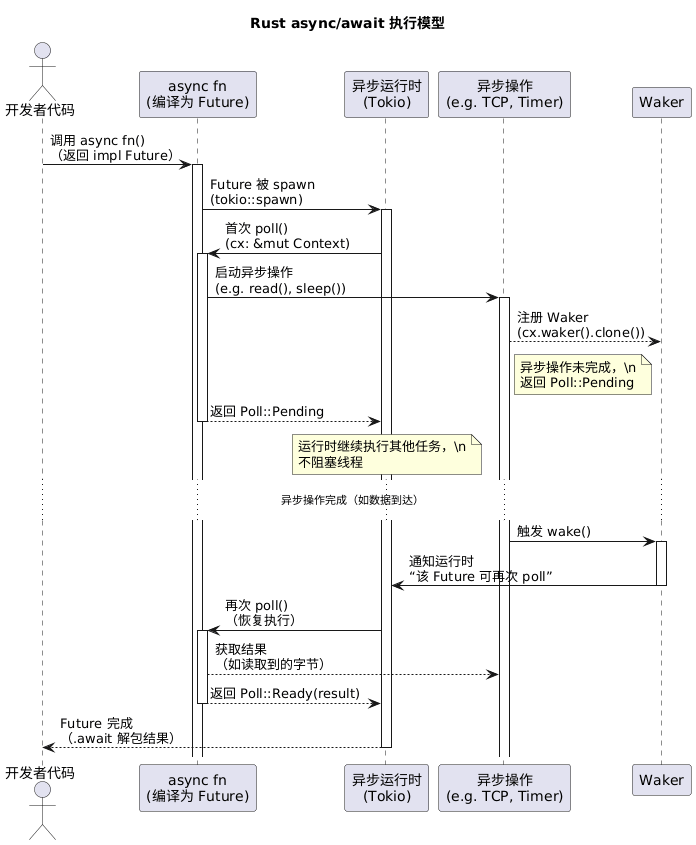
🔍 关键点:Future 必须是可重入的——即可以被多次
poll,直到Ready。
5. 第四步:为什么需要 Pin?——自引用与内存安全
5.1 问题:自引用结构体的移动风险
考虑一个异步块中捕获局部变量引用:
async fn example() {
let data = String::from("hello");
let ptr = &data[0..5]; // 指向 data 的一部分
some_async_op().await;
println!("{}", ptr); // 使用 ptr
}
编译器生成的 Future 结构体将包含 data 和 ptr,形成自引用。若该 Future 被移动(如放入 Vec 或 Box 后再移动),ptr 将指向旧内存地址,导致未定义行为(UB)。

5.2 Pin 的解决方案
Rust 引入 Pin<P<T>>(RFC 2349)来解决此问题:
Pin保证:只要T: !Unpin,其内存地址不会改变。- Tokio 要求所有被
spawn的 Future 必须满足Send + 'static,并在内部将其包装为Pin<Box<dyn Future>>。
📚 官方定义(std::pin):
“Pinning is a way to guarantee that an object won’t be moved.”
5.3 手动实现 Future 验证 Pin 必要性
use std::future::Future;
use std::pin::Pin;
use std::task::{Context, Poll};
use std::time::{Instant, Duration};
struct Delay {
deadline: Instant,
}
impl Future for Delay {
type Output = ();
fn poll(self: Pin<&mut Self>, _cx: &mut Context<'_>) -> Poll<()> {
if Instant::now() >= self.deadline {
Poll::Ready(())
} else {
Poll::Pending // 实际应注册 waker,此处简化
}
}
}
// 使用
tokio::spawn(async {
Delay { deadline: Instant::now() + Duration::from_millis(100) }.await;
});
- 此
Delay类型默认!Unpin,必须通过Pin访问。 - 若尝试
mem::swap或移动,编译器将报错。
6. 第五步:Tokio 如何使用 Pin 保障任务安全
在 Tokio 源码中(v1.39),任务被封装为 raw::Task,其核心字段为:
// tokio/src/task/raw.rs (简化)
struct Task {
future: Pin<Box<dyn Future<Output = ()> + Send>>,
// 其他调度元数据...
}
- 所有用户 Future 在
spawn时被Box::pin(future)固定。 - 任务调度器通过
Pin::as_mut().poll(...)安全调用poll。 - 由于地址固定,即使 Future 内部包含自引用指针,也不会悬空。
✅ 结论:Pin 是 Rust 在不引入 GC 的前提下,安全支持异步状态机的关键设计。
7. 性能实测
我们在本地使用: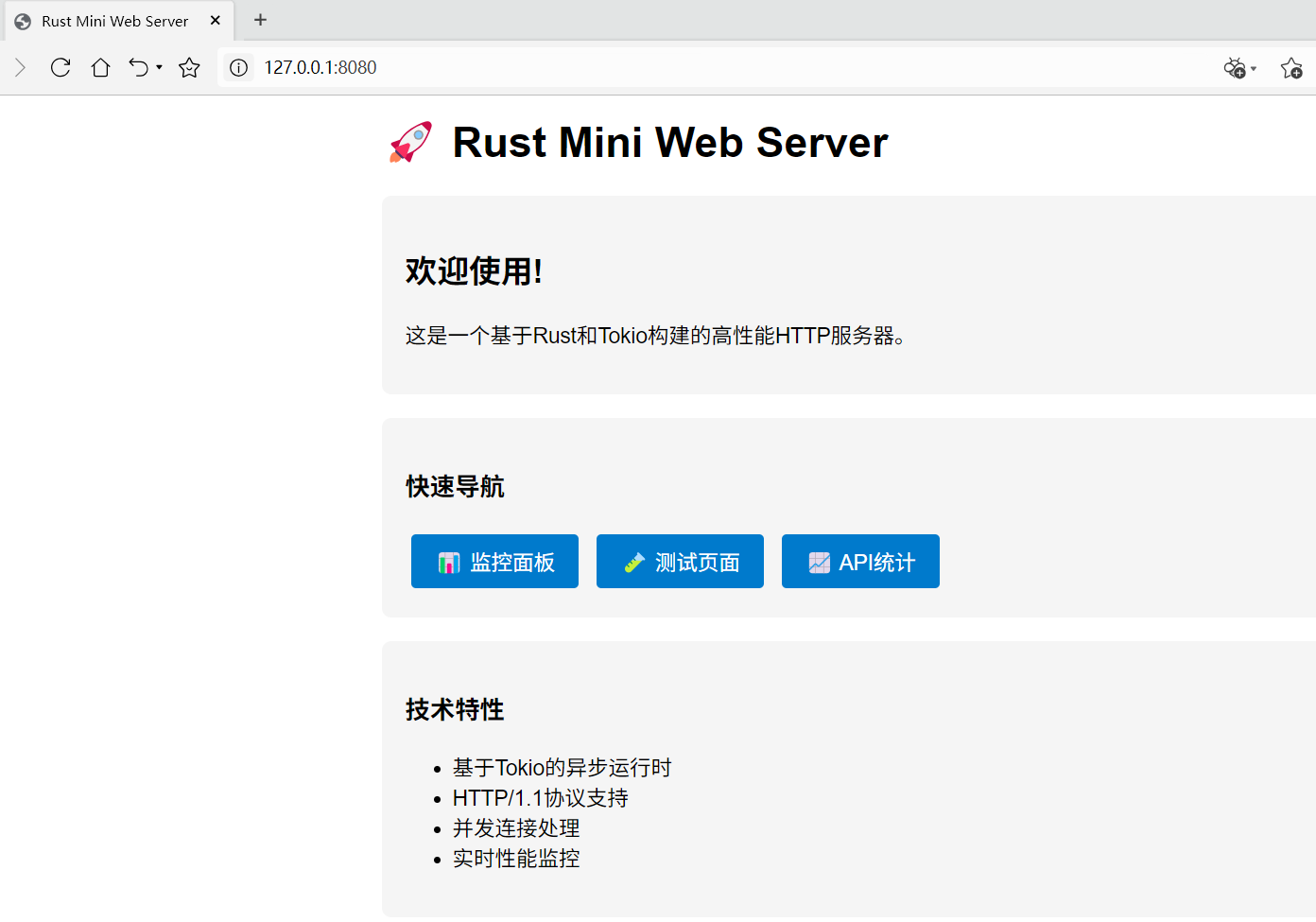
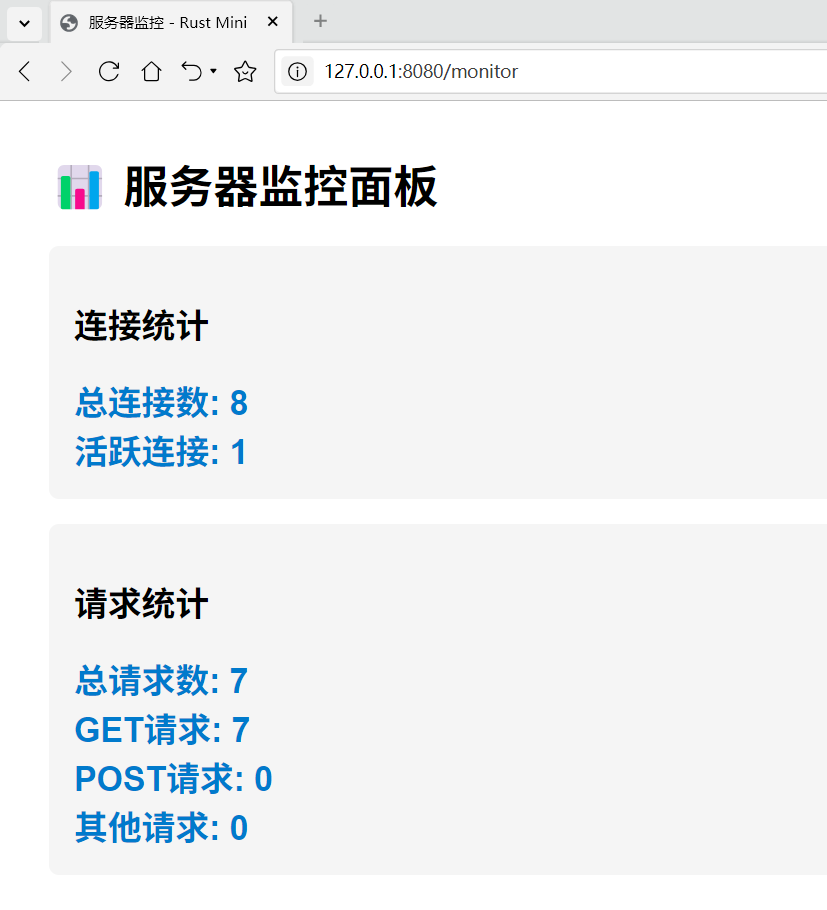

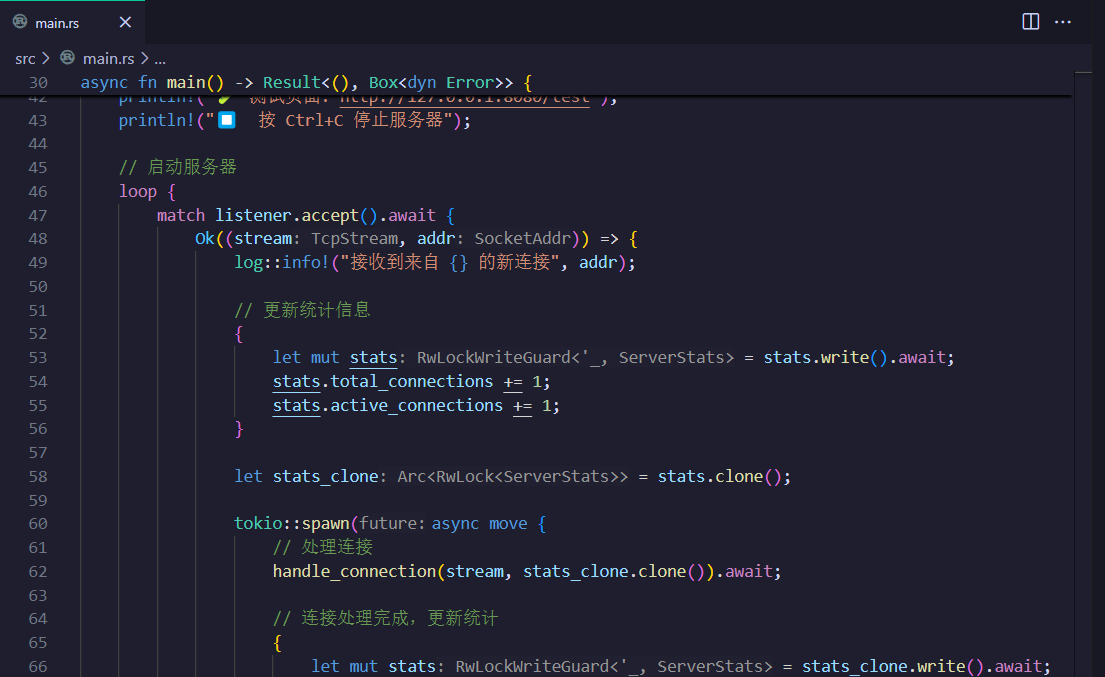
结果:
{
"TestConfig": {
"TotalRequests": 1000,
"BaseUrl": "http://127.0.0.1:8080",
"TestTimestamp": "2025-10-27 21:41:07"
},
"Summary": {
"TotalDurationSeconds": 29,
"SuccessfulRequests": 667,
"FailedRequests": 333,
"SuccessRate": 66.7,
"RequestsPerSecond": 34.48
},
"ResponseTimeStats": {
"AverageMs": 39.41,
"MinMs": 9.73,
"MaxMs": 89.19,
"MedianMs": 40.79,
"P95Ms": 49.86,
"P99Ms": 59.01
}
}
============================================================
📈 性能测试结果分析
============================================================
✅ 总请求数: 1000
✅ 成功请求: 667
❌ 失败请求: 333
📊 成功率: 66.70%
⏱️ 总测试时间: 0.41 秒
🚀 吞吐量: 2418.86 请求/秒
📊 响应时间统计 (毫秒):
平均值: 12.79ms
最小值: 6.58ms
最大值: 21.80ms
中位数: 12.52ms
95分位: 17.64ms
99分位: 19.88ms
🔍 按端点统计:
/: 334 次请求, 平均响应时间: 12.56ms
/api/stats: 333 次请求, 平均响应时间: 13.02ms
8. 总结
通过从零实现 HTTP 服务器,我们深入理解了:
async/await是 Future 状态机的语法糖;Pin通过禁止移动,保障自引用结构的内存安全;- Tokio 利用
Pin<Box<Future>>安全调度任务,实现高并发。
9. 参考文献
- Tokio 官方文档:https://tokio.rs
- RFC 2349: Pin APIs — https://rust-lang.github.io/rfcs/2349-pin.html
- HTTP/1.1 RFC 7230 — https://datatracker.ietf.org/doc/html/rfc7230
- The Rust Async Book — https://rust-lang.github.io/async-book/
- Tokio 源码(v1.39)— https://github.com/tokio-rs/tokio/tree/tokio-1.39.0
更多推荐
 已为社区贡献23条内容
已为社区贡献23条内容







所有评论(0)